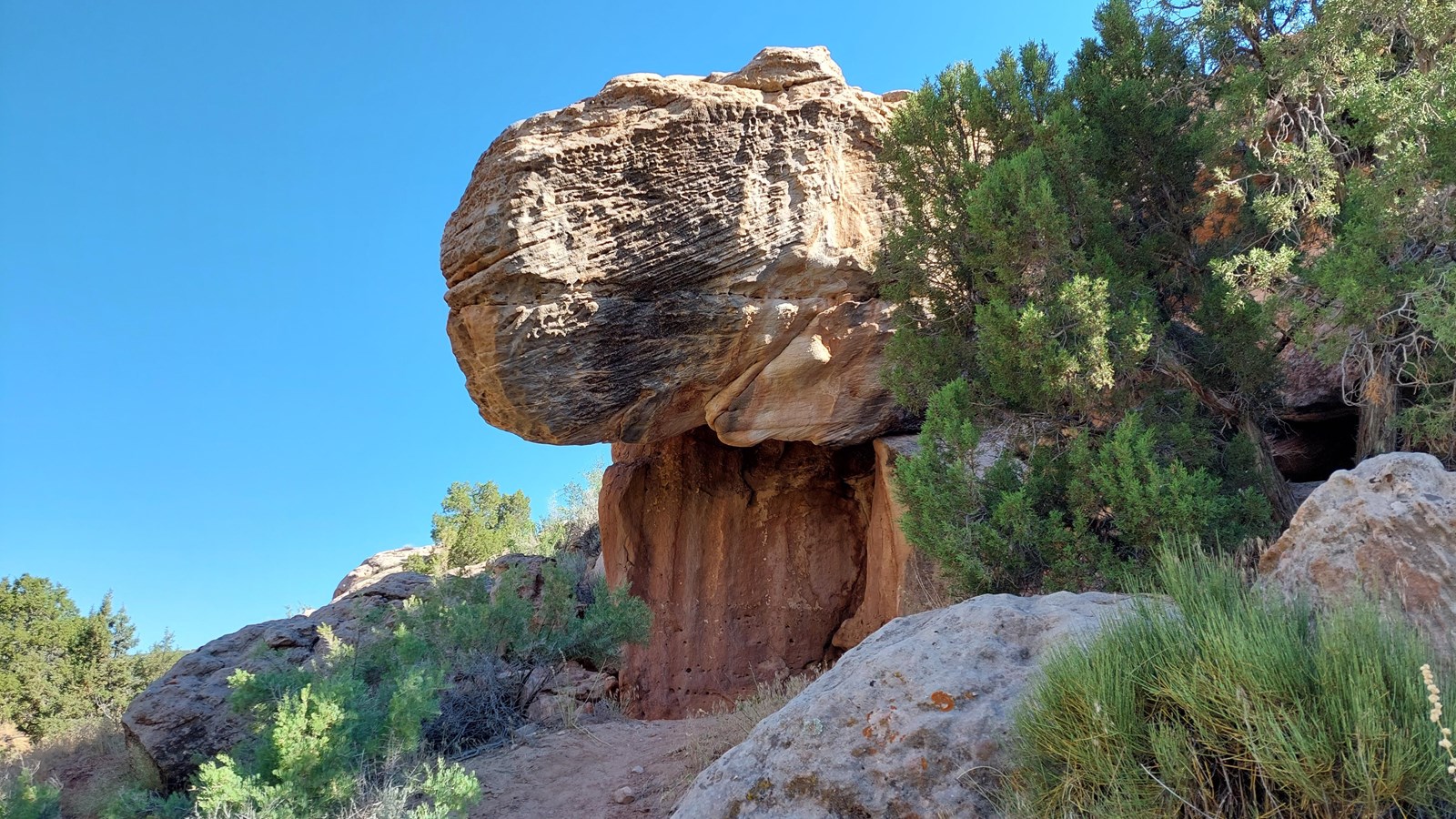Last updated: July 24, 2022
Place
Sound of Silence Trail Stop 7

NPS Photo/Conrad Provan
Quick Facts
Amenities
1 listed
Scenic View/Photo Spot
Within this shady rock overhang, can you spot a portion of a packrat debris pile, also known as a midden? It is above your head, in the crevice between the two large rocks that form the overhang. Look for twigs, rocks and fecal pellets, all held together by shiny crystallized urine. Middens can tell us about past environments. They may exist and be added to for thousands of years. Radiocarbon dating has identified middens up to 50,000 years old. Middens may contain leaves, seeds, fruit, twigs, pollen, bone, shells and scales, leading to identification of past environments. We know from middens that Douglas Fir and Ponderosa Pine once grew in this area, during a cooler and wetter time. As the climate changed over the last 10,000 years, these species retreated to higher elevations where they are still found.
You may notice some plant stumps with large root structures. Why would monument staff cut down these plants? Look around for the feathery leaves of tamarisk, also known as salt cedar. If it is blooming, it will have small, white to pink flowers. It is a non-native tree that grows in riparian areas. Brought to North America in the early 19th century for use as an ornamental wind break, and to fight erosion, it quickly spread and became an invasive weed, often outcompeting native plants. Its presence on the river banks of the Green and Yampa Rivers, and here in this intermittent stream, changes river flow and makes it difficult for deer, elk, and sheep to get to water. In 2006 and 2007, Dinosaur National Monument introduced
50,000 non-native northern tamarisk beetles to four locations in the monument. The most intensively studied biocontrol agent in North America, the beetle eats only tamarisk. While tamarisk will never be eliminated entirely, the beetles are helping to keep it under control and allow native vegetation to rebound.
You may notice some plant stumps with large root structures. Why would monument staff cut down these plants? Look around for the feathery leaves of tamarisk, also known as salt cedar. If it is blooming, it will have small, white to pink flowers. It is a non-native tree that grows in riparian areas. Brought to North America in the early 19th century for use as an ornamental wind break, and to fight erosion, it quickly spread and became an invasive weed, often outcompeting native plants. Its presence on the river banks of the Green and Yampa Rivers, and here in this intermittent stream, changes river flow and makes it difficult for deer, elk, and sheep to get to water. In 2006 and 2007, Dinosaur National Monument introduced
50,000 non-native northern tamarisk beetles to four locations in the monument. The most intensively studied biocontrol agent in North America, the beetle eats only tamarisk. While tamarisk will never be eliminated entirely, the beetles are helping to keep it under control and allow native vegetation to rebound.
